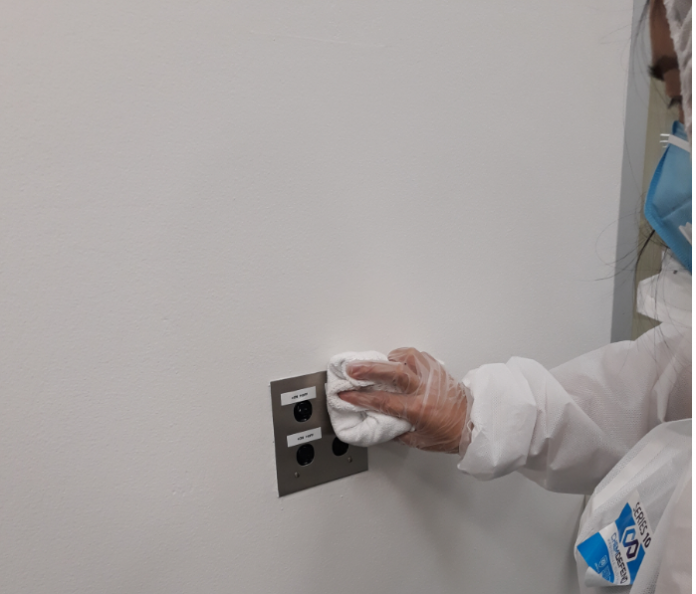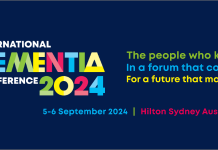All Queensland aged care services will be contacted by Australian Aged Care Quality and Safety Commission officials this week, seeking assurance they have Covid plans in place.
ACQSA has said providers will have to confirm during the phone call they have staffing and risk management procedures in place for potential “immediate activation”.
It comes as Brisbane aged care homes remain closed to personal visitors today, ahead of the lifting of the city’s lockdown from Monday night.
The greater Brisbane stay-at-home directions will end from 6pm local time after the region defied fears of community transmission to record no new cases.
Masks are required in public places, including aged care, for the next 10 days.
Following national agreement from state and territory leaders last week, Queensland Premier Annastacia Palaszczuk on Friday announced the decision to shut down the city and surrounding council areas in response to the first local transmission of the highly virulent UK strain.
The Queensland Aged Care Direction bars people from visiting aged care, hospitals, disability accommodation services and prisons in the southeastern Queensland regions until a new notice comes into force.
Restrictions also remain in Sydney’s northern beaches where their lockdown was lifted over the weekend.
Residents of the affected areas must not visit aged care homes, nor can people from Wollongong, Cumberland City or the Canterbury area of Canterbury-Bankstown.
Visitors are limited to two a day and staff must always wear masks within the facility.
The latest measures follow the release of the Australian Aged Care Quality and Safety Commission’s report into the handling of the deadly Victorian outbreaks in residential care, Lessons learned by aged care providers experiencing outbreaks of COVID-19 in Victoria, Australia.
Last year’s 191 outbreaks in the state impacted more than 2000 aged care residents and more than 2200 staff.
In Victoria, 660 residents died from the virus. Around the country, 693 Australians in aged care died last year from COVID-19.
Providers detailed how what they believed to be their considered plans were overwhelmed at times by the speed and scale of the viral transmission and infections.
One said: “We prepared for a big storm, but we were hit by a tsunami.”
“For providers of residential aged care services in Victoria, the period of June-September 2020 was beyond any crisis they had previously experienced,” the report said.
“Providers with COVID-19 outbreaks were required to take action at another level, scale and pace, and while there were devastating outcomes for many, there were also countless stories of innovation, resourcefulness and resilience.”
Challenges included the provision of PPE, communication with internal and external sources and delivering food services and other care while maintaining infection control.
Interviews with 34 aged care providers revealed detailed and specific plans, with on-site and visible management with clear roles and responsibilities, clinical expertise and back-up staffing were critical to more successful outcomes during the pandemic.
“Providers overwhelmingly identified that the more detailed and specific the plans were, the more useful they were when dealing with an outbreak,” the report said.
“Effective plans took into account: the building design and the layout of the service, the individual residents and their care needs, the impact of the layout on capacity to deliver certain services (for example, one provider noted that at one service, it was safer to send laundry offsite due to the service’s layout, whereas laundry could be managed onsite for other services, local service providers and contractors and their capacity and availability to help.”
Sourcing and rostering for the increased staffing needs was also viewed as key to the success or otherwise of the response.
When staff were infected or sent for testing, or unable to work for other reasons, it created a sudden vacuum in available workforce that providers were “generally not prepared for”.
One provider reported their staffing needs tripled.
“Many providers were also unprepared for the number of additional staff required to deliver care and services and manage operations during an outbreak,” the report said.
“Providers commented that infection control procedures (particularly the donning and doffing of PPE) meant that staff took longer to complete tasks, cohorting required the creation of at least two separate workforces, looking after COVID-19 positive residents was time consuming, and the increased frequency of cleaning and laundry services required additional staff.”
Staff training and onboarding became extremely important, with highly detailed breakdowns of tasks and processes suddenly critical.
Care and wellbeing was also crucial. Providers noted that in hindsight counselling and mental health support should have been provided sooner.
Finally, providers said it was important to keep a detailed outbreak management plan and to test it.
“In general, providers felt you could not overprepare as, once an outbreak occurs, there is little time to spare,” the report said.










